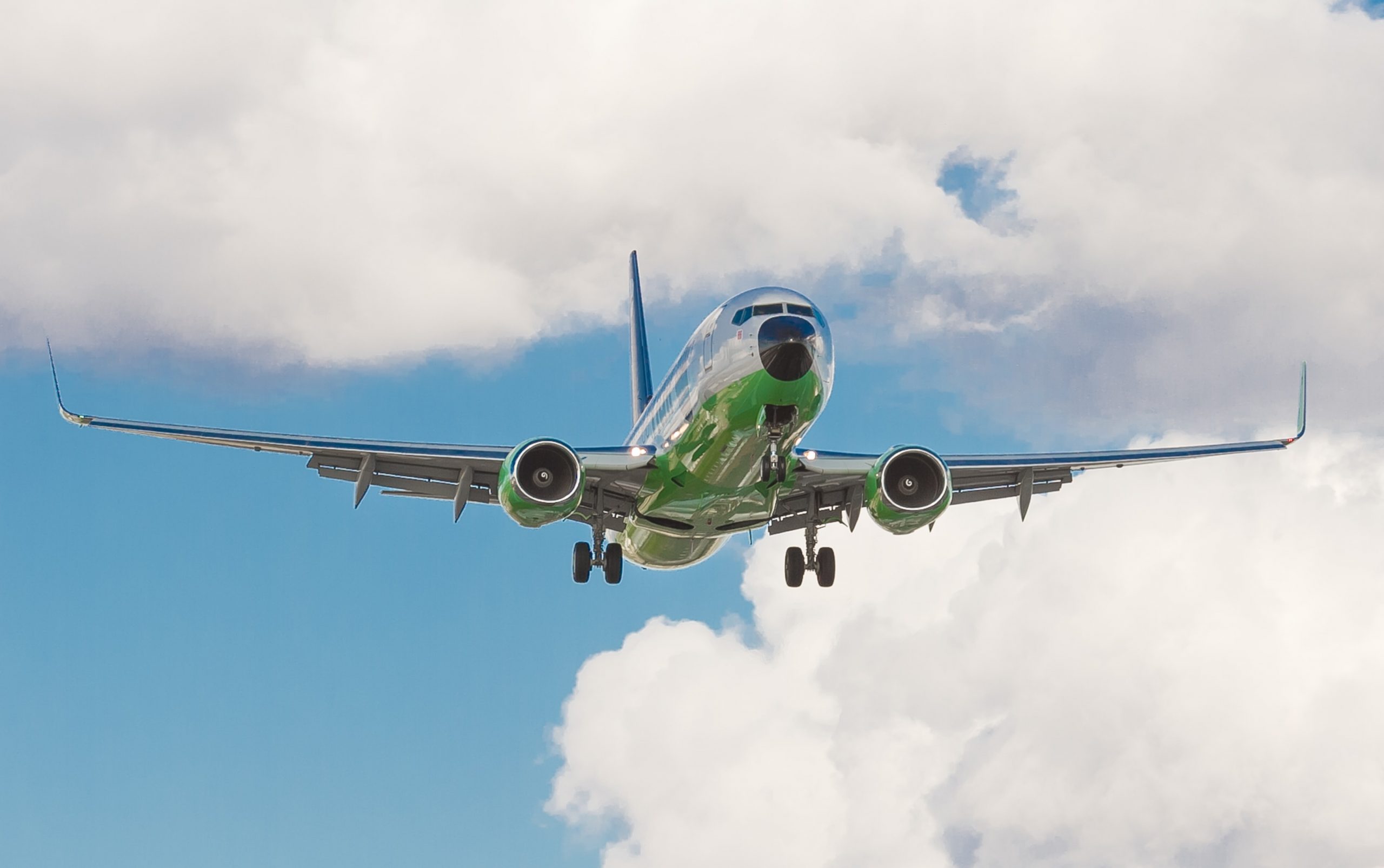




02 Oct 2025
Why Regional Aircraft Pose Greater Financing Challenges Than Larger Jet
Imagine standing at a small regional airport on a crisp morning. A 70-seater aircraft is boarding, ready to connect a smaller city to a major hub. For the passengers, it’s just another short flight. For financiers and lessors, though, that same aircraft represents one of the toughest puzzles in aviation finance.
Regional aircraft, typically seating between 50 and 100 passengers, remain essential to global connectivity. They link communities that larger jets can’t serve economically, open new routes, and sustain secondary airports. Without them, many towns and mid-sized cities would disappear from the aviation map.
Yet when it comes to financing, enthusiasm quickly cools. Compared with larger narrowbodies and widebodies, regional jets and turboprops face far greater hurdles in attracting capital. Economics often work against them.
Larger aircraft enjoy predictable demand, strong secondary markets, and resilient long-term value. Regional aircraft, by contrast, are often seen as risky assets with limited liquidity and uncertain futures. Add in factors such as pilot shortages, U.S. scope clause restrictions, and the fading economics of 50-seat jets, and the risk profile becomes even harder to justify.
And yet, the paradox is clear: the world still needs regional aircraft. As passenger traffic grows and airlines seek to connect smaller cities, these aircraft remain indispensable. The real challenge isn’t their relevance, but whether investors and lessors can navigate the financing barriers that make them less attractive as assets.
In this blog, we’ll explore why financing regional aircraft is more complex than larger jets, outline the key challenges, and consider how technology and shifting market dynamics could reshape the outlook.
What Makes Regional Aircraft Different From Larger Jets?
The key difference is that regional aircraft are smaller, less flexible, and riskier to finance because they generate lower revenue per flight, have limited secondary markets, and carry higher per-seat costs compared to larger narrowbodies.
If you’ve ever flown on a smaller jet or turboprop, the passenger experience feels different: narrower cabins, sharper engine noise, quicker takeoffs. But for financiers, the differences run much deeper, and they directly explain why regional aircraft face unique challenges compared with narrowbodies like the Airbus A320 or Boeing 737.
Size and Seating Capacity
Regional aircraft typically carry 50 to 100 passengers, while narrowbodies like the A320neo or 737 MAX seat 150 to 200. That gap might not sound huge, but in airline economics, 50 extra seats can make the difference between profit and loss. More seats mean more ticket revenue per flight, which makes it easier for airlines to cover leasing and financing costs.
For a financier, fewer seats mean lower revenue potential and thinner margins, a red flag in an already tight industry.
Range and Mission Profile
Regional aircraft are designed for short-haul routes, usually between smaller airports or secondary hubs, with average stage lengths of 300–800 nautical miles. Narrowbodies can fly over 1,500 miles, making them more versatile.
That limited mission profile makes regional jets specialists, not generalists. They serve thin routes well, but they lack the flexibility to switch into broader networks. For financiers, that narrower role reduces resale value and makes it harder to place aircraft with new operators later in life.
Turboprops vs. Regional Jets — What’s the Difference?
Turboprops, such as the ATR 72 or De Havilland Dash 8, use propeller engines, are most efficient under 500 miles, and seat 40–80 passengers. They’re fuel-efficient on short hops and remain popular with regional carriers focused on cost.
Regional jets, such as Embraer’s E-Jet series or the now-cancelled Mitsubishi SpaceJet, use jet engines, fly faster, and typically seat 70–100 passengers. Jets feel more “mainline” to passengers, but for financiers, the choice comes down to regional demand: some markets prioritise efficiency with turboprops, others prefer the passenger appeal of jets despite higher fuel burn.
Residual Value and Secondary Market
Residual value is one of the biggest hurdles. Narrowbodies and widebodies enjoy strong global demand, large fleets, and active resale markets. An A320 coming off lease can usually find another operator quickly.
Regional aircraft don’t enjoy that liquidity. Fleets are smaller, fragmented across regions, and demand shifts faster. If a lessor takes back a regional jet, finding the next operator can be slow and reconfiguration costs like seat layout changes or avionics upgrades erode returns.
Operating Costs
While regional aircraft burn less fuel overall, they are more expensive on a per-seat basis. A 76-seat regional jet spreads costs across fewer passengers than a 180-seat A320, making each ticket more costly to produce. This per-seat inefficiency is another reason why airlines and financiers lean toward larger jets whenever passenger demand allows.
Why Is Financing Regional Aircraft More Difficult — Key Challenges?
Because regional aircraft carry higher risk and lower long-term returns, financiers face more red flags compared to larger jets from limited secondary markets and weak residual values to regulatory limits, pilot shortages, and environmental pressures.
Regional aircraft may be essential to aviation networks, but when financiers and lessors evaluate them, the challenges outweigh the opportunities more often than with narrowbodies or widebodies. Here’s why:
1. Limited Secondary Market Liquidity
For financiers, a strong secondary market is a safety net, the ability to resell or re-lease an aircraft if a deal falls through. Narrowbodies like the A320 or 737 have enormous global fleets, so if one airline defaults, another is ready to take the asset.
Regional aircraft don’t enjoy that demand. For example, the Embraer E175 is popular in the U.S. but has far fewer global operators. Once U.S. demand fades, lessors struggle to place them elsewhere. This weak liquidity drives up financing risk and often results in higher premiums or outright avoidance.
2. The Economic Viability of 50-Seater Aircraft
The 50-seat jet, once the backbone of regional networks, has become uneconomical:
- Pilot shortages push airlines to allocate crews to larger aircraft, where each pilot hour serves more passengers.
- Fuel and maintenance costs spread over fewer seats make 50-seaters costlier per passenger.
- Fleet storage of models like the CRJ200 and ERJ145 has depressed asset values.
For banks and lessors, these aircraft are now cautionary tales once vital, now financial dead ends.
3. Scope Clauses in the U.S.
In the U.S., pilot union agreements cap the number and size of regional jets that can be outsourced by major carriers. For American, Delta, and United, regional aircraft cannot exceed 76 seats.
Any aircraft larger than that must be flown by mainline crews, who earn higher wages. This artificial ceiling restricts demand growth and discourages financiers from backing larger regional jets.
4. Pilot Shortages and Crew Costs
Regional airlines are hardest hit by pilot shortages because they are the entry point for new pilots. As soon as pilots qualify for mainline carriers, they leave for better pay.
The result is high turnover, rising crew costs, and weaker profitability all of which increase the financing risk. Larger airlines can weather shortages with higher wages and benefits, but regional airlines struggle to compete.
5. Uncertainty Around the Future of Regional Aircraft
The long-term role of regional jets is unclear. New crossover models like the Embraer E2 and Airbus A220 blur the line between regional and narrowbody categories, seating 100–150 passengers with better efficiency.
This makes investors question whether traditional 70–90 seat aircraft will remain viable in the next decade, or risk obsolescence. Financiers prefer larger aircraft with proven longevity.
6. Lease Terms and Financing Costs
Because of these risks, regional aircraft attract shorter lease terms and higher financing costs.
- Narrowbodies often secure 12-year leases at competitive rates.
- Regional jets are more likely to see 6–8 year leases with higher interest.
For airlines, this raises total ownership costs. For lessors, it means more remarketing cycles, higher expenses, and less stability.
7. Environmental and Sustainability Pressures
Regional aircraft are also under scrutiny from regulators targeting short-haul flights. In Europe, flights under 500 km face increasing pressure to shift to rail.
This creates additional policy risk: if regulators restrict short-haul operations, regional fleets could be stranded. Larger long-haul aircraft are less exposed to these pressures.
In short, regional aircraft remain critical to networks but far harder to justify financially. For financiers, the higher risk profile translates into stricter terms, shorter leases, and greater caution compared to larger jets.
Why Are Larger Jets Easier to Finance?
Because they are global “blue-chip” assets with strong secondary markets, stable demand, better operating economics, and higher residual value, making them far less risky for financiers than regional aircraft.
If financing regional aircraft often feels like a gamble, larger jets especially workhorses like the Boeing 737 and Airbus A320 families are viewed as safer bets. In aviation finance, they are often considered the “blue-chip assets” of the skies.
Strong Secondary Market
One of the biggest advantages is liquidity. Narrowbodies are flown by airlines worldwide, so if one airline defaults, there are many others ready to take the aircraft. An A320 coming off lease in Europe can quickly find a home in Asia or Africa. This global demand gives financiers confidence that the asset will hold value and remain marketable throughout its lifespan.
Stable and Consistent Demand
Narrowbodies are central to airline networks. Major carriers rely on them to connect key city pairs, feed international hubs, and drive low-cost carrier growth. Airlines like Ryanair, IndiGo, and Southwest have built entire business models around single fleet types. Unlike regional jets, which face route- or regulation-dependent demand, narrowbodies are consistently required across the globe.
Superior Operating Economics
With 150–190 seats, a 737-800 or A320neo spreads costs across more passengers. That efficiency in fuel, crew, and maintenance translates to stronger profitability for operators. For financiers, higher operator profitability means lower default risk, a critical factor in asset-backed lending.
Longer Lease Terms and Higher Residual Value
Narrowbodies usually secure 10–12 year leases compared to 6–8 years for regional aircraft. They also remain in service longer, which allows financiers to achieve more predictable long-term returns. Their flexibility flying everything from short domestic hops to transatlantic routes adds another layer of security.
Lower Risk Perception
When financiers look at a 737 MAX or A320neo, they see aircraft with hundreds of operators, global demand, and production lines that will remain active for decades. That assurance simply doesn’t exist with regional aircraft, which are more exposed to market shifts, regulatory limits, and crew shortages.
In short, larger jets inspire confidence because they deliver stability, liquidity, and long-term value while regional aircraft bring volatility and risk.
How Do Lessors and Banks View Regional Aircraft?
With caution, regional aircraft are seen as higher-risk assets with weaker collateral value, limited liquidity, and greater regulatory uncertainty, which leads financiers to impose stricter terms and shorter deals than they would on larger jets.
On paper, regional jets and turboprops should be attractive. They’re cheaper to acquire, have shorter delivery backlogs, and play a critical role in connecting communities. Yet in practice, financiers hesitate because the risks often outweigh the rewards.
The Lessor’s View
For leasing companies, the biggest challenge is limited placement opportunities. A Boeing 737 or Airbus A320 can be leased to dozens of airlines worldwide, but a Bombardier CRJ900 or Embraer E170 has a far narrower customer base. This lack of secondary market liquidity makes it harder to redeploy aircraft if a lease ends early or an airline defaults. Lessors thrive on flexibility something regional aircraft often don’t provide.
The Bank’s View
Banks are even more conservative. Regional aircraft are seen as carrying lower collateral value and weaker long-term prospects. Financing deals typically require higher interest rates or shorter repayment terms to mitigate that risk. By contrast, narrowbodies and widebodies, with global demand and strong residual values, are treated as safer asset classes that justify longer loan tenures on more favourable terms.
The Impact of Market and Regulatory Risks
Uncertainty compounds the problem. U.S. scope clauses limit the number and size of regional jets major carriers can outsource, creating artificial caps on demand. Pilot shortages, which hit regional carriers hardest, further reduce confidence in profitability. Together, these dynamics make financiers cautious about long-term exposure.
Exceptions to the Rule
It isn’t all negative. Some leasing companies carve out profitable niches by specialising in regional aircraft and building strong ties with smaller operators. Likewise, certain banks will finance regional jets where the business case is strong for example, in emerging markets with growing regional networks. But these cases remain the exception rather than the rule.
In short, lessors and banks treat regional aircraft as higher-risk bets. They may engage, but only after imposing stricter terms, tighter controls, and ensuring a clear exit strategy, a far more cautious approach than with larger jets.
Are Regional Aircraft Still Relevant in Today’s Market?
Yes — regional aircraft remain essential, though their role is shifting from traditional 50-seaters to more efficient crossover jets, turboprops, and even cargo-focused variants.
Regional jets and turboprops are often the only viable way to connect smaller cities to the global air network. Without them, many secondary airports would lose commercial service altogether. Larger aircraft like the Boeing 787 or Airbus A320 can’t operate profitably on these thinner routes. Regional aircraft fill this “first and last mile” of connectivity.
Changing Role in Passenger Service
The days of 50-seaters dominating U.S. skies are fading. Pilot shortages, higher per-seat operating costs, and aging fleets have led many airlines to retire these smaller aircraft. In their place, larger crossover jets such as the Embraer E2 family or the now-cancelled Mitsubishi SpaceJet offer a better balance of efficiency and regional flexibility.
Passenger Perceptions and Efficiency
From a financial perspective, larger jets are more efficient on a per-seat basis, which is why airlines deploy them when demand supports higher loads. But when passenger volumes are lighter or routes are shorter, regional aircraft remain the more economical choice.
As for safety and comfort, modern regional jets are built to the same standards as larger aircraft. They aren’t inherently more turbulent; bumps are the result of weather, not aircraft size.
Expanding Role in Cargo
Regional aviation is also being reshaped by e-commerce. Cargo-focused turboprops and converted smaller freighters are becoming vital to regional supply chains, ensuring fast and efficient movement of goods across short distances.
In short, regional aircraft are still highly relevant not in the same numbers or roles as before, but as indispensable connectors for passengers, cargo, and regional economies. Without them, countless routes would disappear, and global connectivity would suffer.
What Is the Future of Regional Aircraft Financing?
The future is cautiously optimistic while challenges like pilot shortages and limited liquidity will persist, sustainability, digital innovation, emerging markets, and cargo demand are creating new pathways that could make regional aircraft more attractive to financiers.
If the story so far paints regional aircraft as difficult assets to finance, the outlook isn’t necessarily bleak. Several trends suggest the financing environment may evolve in ways that improve their value proposition.
Sustainability as a Catalyst
Airlines and lessors are under increasing pressure to cut carbon emissions, and new-generation regional aircraft are part of the solution. Models such as the Embraer E2 series and ATR’s latest turboprops offer significantly lower fuel burn and emissions, reducing both environmental impact and operating costs. This dual benefit makes them more appealing for airlines focused on greener operations and financiers seeking assets that will remain relevant in a carbon-conscious future.
Digital Transformation
Advances in predictive maintenance, data analytics, and digital twin technology are improving cost management even for smaller fleets. Reduced downtime and greater efficiency give financiers clearer visibility into long-term value and lower the risk profile of regional aircraft.
Growth in Emerging Markets
Demand for regional connectivity is rising in Asia, Africa, and Latin America, where large narrowbodies are often too costly or impractical for thinner routes. In these regions, regional aircraft remain the only viable option, creating opportunities for financiers willing to invest in growth markets.
Cargo Opportunities
The boom in e-commerce is reshaping the role of regional aircraft. Converted turboprops and smaller freighters are increasingly in demand to serve regional logistics chains. For older passenger aircraft nearing the end of their service lives, cargo conversion offers a new lease of life and a secondary revenue stream for lessors.
Persistent Uncertainty
Despite these positives, risks remain. Pilot shortages, U.S. scope clauses, and limited secondary market liquidity won’t disappear overnight. As a result, financiers will likely continue to apply stricter terms, demand higher returns, and favour only the most modern, efficient aircraft.
In short, regional aircraft will survive. The question is not their relevance, but whether investors and lessors will adapt financing models to align with sustainability, digital efficiency, and new market demand.
Conclusion — So Why Is Financing Regional Aircraft So Hard?
Financing regional aircraft is a story of balance between necessity and risk, opportunity and uncertainty. On one hand, these jets and turboprops are vital to connecting smaller airports, feeding passengers and cargo into the global air network, and keeping regional economies linked to major hubs. On the other hand, they come with a unique set of challenges: limited secondary markets, higher per-seat operating costs, regulatory constraints like U.S. scope clauses, pilot shortages, and evolving fleet economics.
Unlike larger jets, which benefit from strong global demand, predictable revenue, and a robust secondary market, regional aircraft are far more sensitive to market shifts and regulatory pressures. Lessors and banks approach them cautiously, often applying higher financing costs, shorter leases, and stricter terms to protect against risk. Yet despite these hurdles, regional aircraft remain essential. Their role may be changing from traditional 50-seaters to more fuel-efficient and slightly larger jets, and even cargo conversions but their contribution to connectivity and logistics cannot be overstated.
The future of financing these aircraft is tied to innovation and adaptability. Sustainability initiatives, digital tools for predictive maintenance, emerging market demand, and cargo opportunities could reshape the risk profile, making regional jets more attractive to financiers who are willing to embrace change.
In the end, the question isn’t just why financing regional aircraft is difficult, it's who will rise to the challenge. Will investors and lessors develop creative strategies to support these vital aircraft, or will regional aviation continue to face financial headwinds? Only time will tell, but one thing is clear: regional aircraft will continue to play a crucial role in the skies for years to come.
FAQs on Financing Regional Aircraft
1. Why are regional aircraft considered riskier to finance than larger jets?
Because they generate lower revenue per flight, have smaller and fragmented secondary markets, and face structural challenges such as pilot shortages and U.S. scope clause restrictions. These factors make their long-term value less predictable compared to narrowbodies like the A320 or 737.
2. Do regional aircraft hold their value in the secondary market?
Not as well as larger jets. Narrowbodies enjoy global demand and strong resale markets, while regional aircraft often face limited liquidity. This makes it harder for lessors to remarket them once leases expire, reducing confidence in their residual value.
3. How do lease terms differ between regional and larger aircraft?
Regional aircraft typically secure shorter leases around 6–8 years with higher financing costs. Narrowbodies, by contrast, often see 10–12 year leases at more competitive rates, giving financiers more predictable long-term returns.
4. Are new-generation regional aircraft changing investor perceptions?
Yes, to some extent. Aircraft like the Embraer E2 series and ATR’s latest turboprops offer better fuel efficiency and lower emissions, which align with sustainability goals. While they don’t eliminate all risks, they improve the investment case for financiers focused on future-proof assets.
5. Will regional aircraft continue to play a role in the aviation market?
Absolutely. Their role is evolving, but they remain essential for connecting smaller cities, supporting regional economies, and increasingly serving cargo networks. The challenge lies in developing financing models that balance their operational necessity with their higher financial risk.





